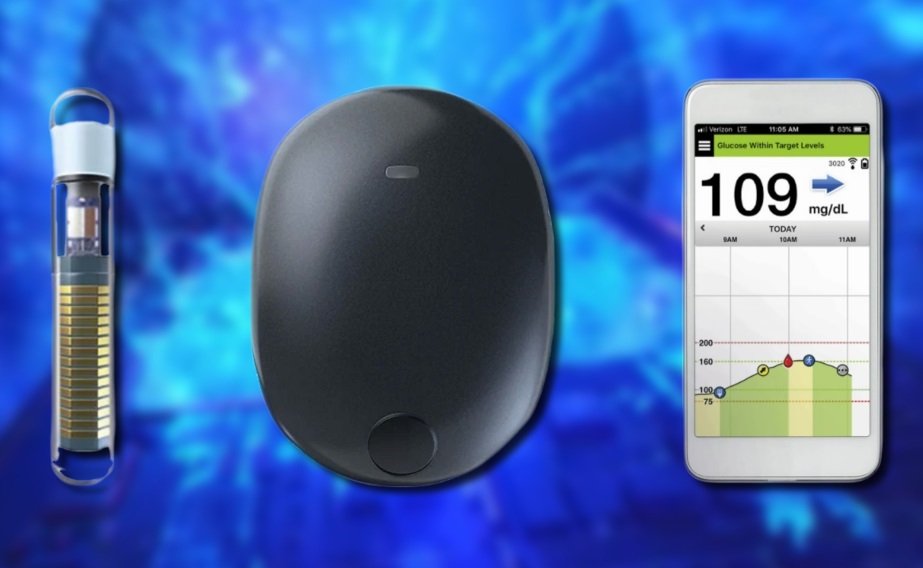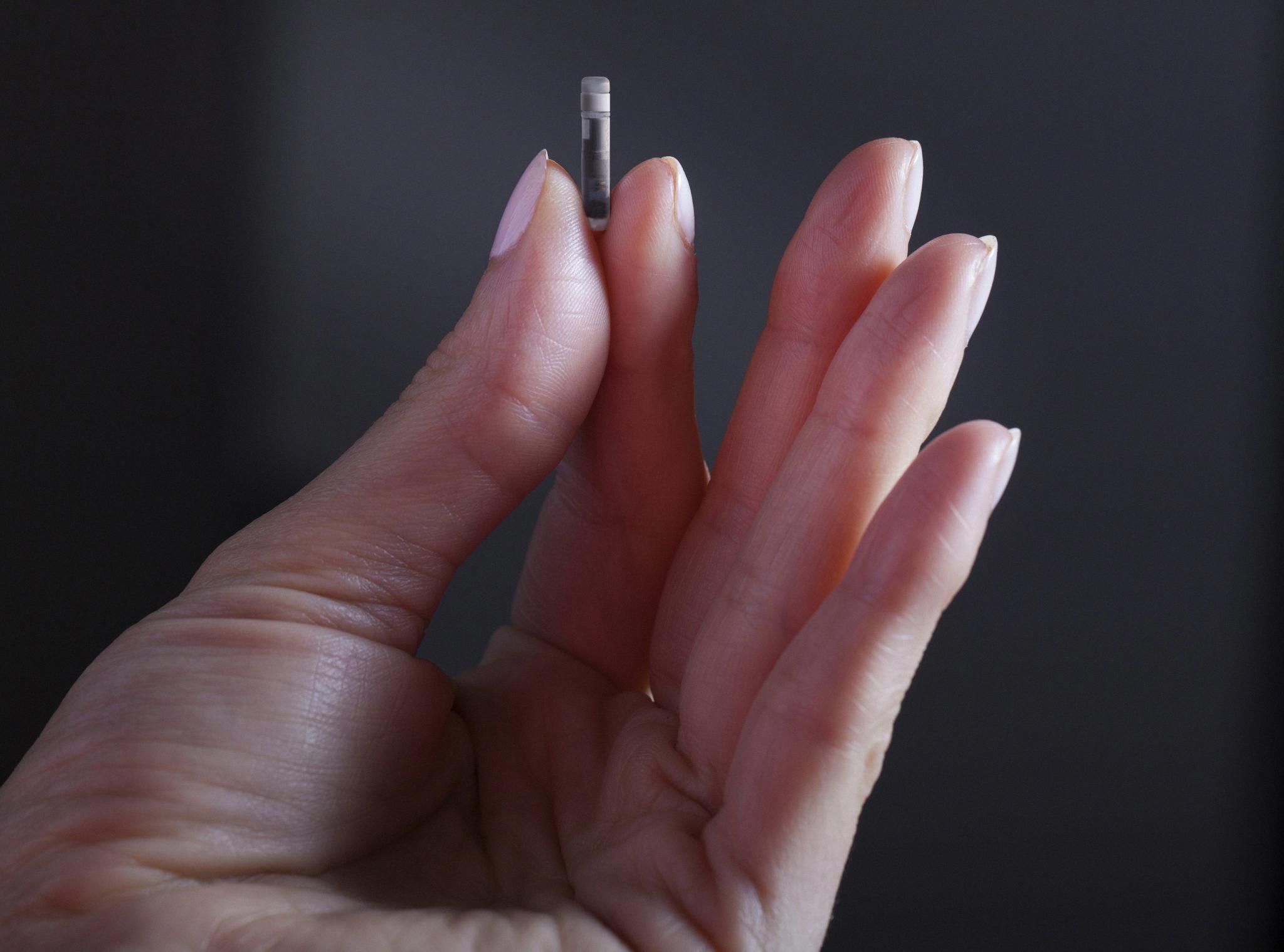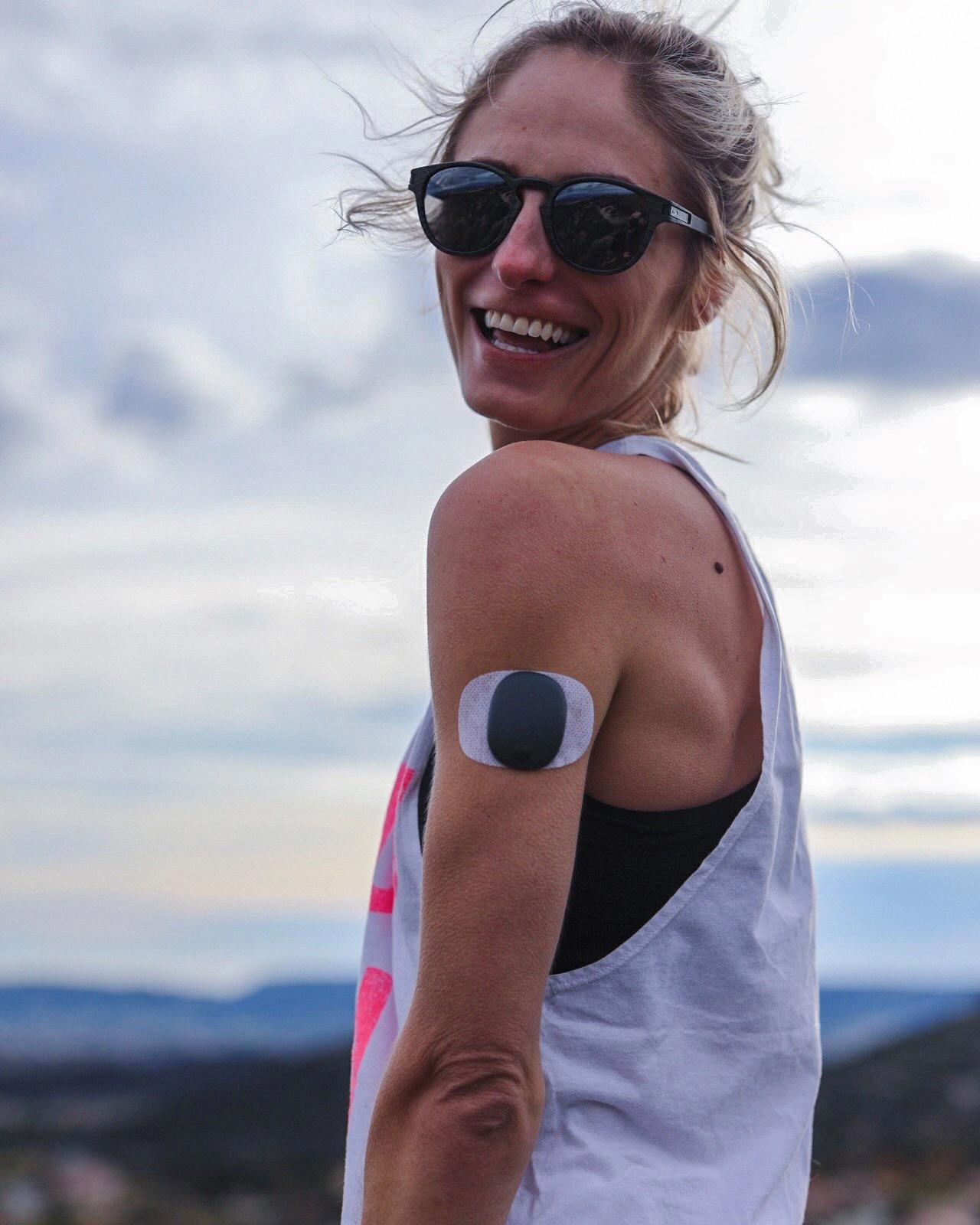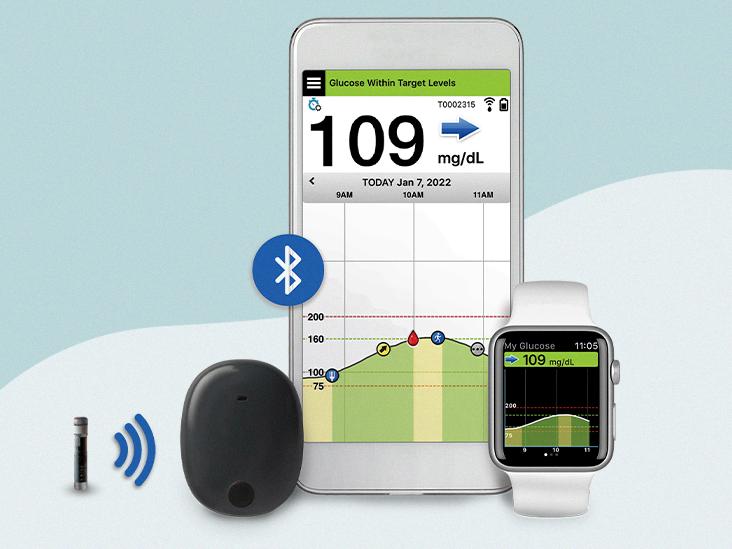Continuous glucose monitoring (CGM) systems are essential tools for people with diabetes to manage their blood sugar levels effectively. One of the most popular and advanced CGM systems on the market today is the Eversense E3. However, with advanced technology comes an increased cost. In this blog post, we will explore the cost of the Eversense CGM system and compare it to other CGM systems on the market.
The Eversense E3 CGM system consists of a small sensor that is inserted under the skin and a smart transmitter that sends glucose readings to a mobile app. The Eversense sensor lasts up to 90 days, which is significantly longer than other CGM sensors like Dexcom, which lasts up to 10 days. The extended sensor life of Eversense is a significant advantage for people who prefer less frequent sensor changes.
The cost of the Eversense E3 CGM system includes the sensor, the smart transmitter, and the mobile app. The total cost for one year of Eversense E3 system use is approximately $2,900 to $3,500, depending on insurance coverage and other factors. This cost includes the initial sensor insertion and the replacement sensor evey 90 days. The smart transmitter and mobile app are reusable.
Compared to other CGM systems, the Eversense E3 system is more expensive. The most affordable CGM system on the market is the FreeStyle Libre, which costs around $120 to $130 per sensor and lasts up to 14 days. The cost of using the FreeStyle Libre system for one year is approximately $1,000 to $1,500, which is significantly less expensive than the Eversense E3 system.
However, it’s important to note that the Eversense E3 system offers unique features that other CGM systems don’t provide. For example, the Eversense CGM system uses a vibrating alert to notify users of high or low blood sugar levels, which is useful for people who may not hear audible alerts due to hearing impairments or noisy environments.
The Eversense E3 CGM system is an advanced and innovative technology that offers unique features and benefits for people with diabetes. While the cost of using this system is higher than other CGM systems on the market, the extended sensor life and vibrating alert feature may be worth the investment for some people. It’s essential to talk to your healthcare provider and insurance provider to determine the best CGM system for your individual needs and budget.
Cost of Eversense E3
The cost of the Eversense E3 system varies depending on several factors such as location, insurance coverage, and medical facility. However, on average, the total cost for the Eversense E3 system is estimated to be between $2,900 to $3,500 per year. This cost includes the implantation procedure, the sensor, and the transmitter. It’s important to note that this is just an estimated cost and can differ based on individual circumstances. It’s recommended to consult with a healthcare provider and insurance company to determine the exact cost of the Eversense E3 system for an individual.

Finding the Cheapest CGM Without Insurance
If you’re looking for the least expensive continuous glucose monitoring (CGM) system without insurance, the FreeStyle Libre products are your best bet. This system is currently available in the United States in two versions: the Libre2 and the 14-day system. Both offer reliable glucose monitoring and are competitively priced compared to other CGM options on the market. The Libre2 uses a small, wearable sensor that is placed on the back of the upper arm, while the 14-day system uses a similar sensor that can be worn for up to two weeks. Both systems use a handheld reader to display glucose data, and the data can also be accessed through an app on a smartphone. the FreeStyle Libre products offer an affordable and reliable option for thoe seeking CGM without insurance coverage.
Availability of Eversense CGM in the USA
The Eversense continuous glucose monitoring (CGM) system developed by Senseonics is avaiable in the United States. In fact, it has recently been approved by the US Food and Drug Administration (FDA) for use for up to six months. The Eversense CGM system is designed to continuously monitor blood glucose levels in people with diabetes, using a tiny implantable sensor that is inserted under the skin. The sensor communicates wirelessly with a mobile app, providing real-time glucose readings and alerts that can help users manage their diabetes more effectively. The Eversense CGM system is a valuable tool for people with diabetes who need to monitor their glucose levels regularly and accurately.
The Process of Implanting Eversense
Eversense is a subcutaneous implantable glucose monitoring system that is inserted under the skin, typically in the upper arm, by a healthcare professional. The procedure is performed under local anesthesia, and takes approximately 5-10 minutes to complete.
First, the area of the upper arm whre the sensor will be inserted is cleaned and sterilized. The healthcare professional then uses a special insertion tool to place the Eversense sensor under the skin. The sensor is about the size of a small paper clip and is inserted at a slight angle. Once the sensor is in place, the insertion tool is removed.
Next, the Eversense smart transmitter is attached to the skin over the sensor site. The transmitter communicates with the sensor and wirelessly sends glucose readings to the Eversense app on a compatible mobile device. The transmitter is held in place by a small adhesive patch, and can be easily removed and reattached for showering or swimming.
The Eversense implantation process is minimally invasive and can be performed quickly and easily by a healthcare professional. The sensor lasts up to 90 days, and the transmitter can be reused with each new sensor insertion.
The Lifespan of Eversense
The Eversense CGM system, specifically the Eversense E3 model, is designed to last for a period of 180 days or approximately six months before needing to be replaced. This is due to the fact that the system includes an implantable sensor that is inserted under the skin of the upper arm and must be removed and replaced by a trained healthcare provider every six months. The Eversense CGM system is known for its long-lasting capabilities, providing continuous glucose monitoring without the need for frequent sensor replacements.

Source: diabetesdaily.com
Medicare Coverage for Continuous Glucose Monitors (CGMs)
Medicare will cover the Dexcom G6 Continuous Glucose Monitoring (CGM) System for patients who meet the Medicare coverage criteria. This includes beneficiaries who have ether type 1 or type 2 diabetes and intensively manage their insulin. It is important to note that not all CGMs are covered by Medicare, so it is crucial to check with your healthcare provider and insurance plan to determine coverage options. The Dexcom G6 CGM System is a popular choice for Medicare beneficiaries due to its accuracy, ease of use, and compatibility with smart devices for convenient monitoring. If you are eligible for Medicare coverage of a CGM, it is recommended to carefully review the criteria and discuss options with your healthcare team to determine the best fit for your individual needs.
Affording a CGM: Strategies and Options
Continuous Glucose Monitoring (CGM) devices can be expensive and not all insurance plans cover them. However, there are several ways people can afford a CGM:
1. Insurance: Some insurance plans cover CGM devices, but coverage and out-of-pocket costs vary by plan. It’s important to check with your insurance provider to see what options are available.
2. Patient Assistance Programs: Many CGM manufacturers offer patient assistance programs to help people with diabetes obtain their devices at a reduced cost or for free. Dexcom, Eversense, Abbott Diabetes Care, and Medtronic Diabetes are some of the companies that offer such programs.
3. Community Programs: Local diabetes organizations or non-profits may offer programs to help people with diabetes obtain CGM devices. It’s worth checking with organizations in your area to see if any such programs are available.
4. Payment Plans: Some CGM manufacturers offer payment plans that allow you to pay for the device over time. This can be a good option for people who cannot afford to pay the full cost upfront.
5. Reselling: Some people sell their used CGM devices online or through social media groups. While this can be a more affordable option, it’s important to make sure the device is stll in good working order and has not expired.
It’s important to note that not all of these options may be available or feasible for everyone. However, with some research and persistence, people with diabetes can find a way to afford a CGM that fits their needs and budget.
Obtaining a Free Continuous Glucose Monitor (CGM)
If you’re interested in getting a free continuous glucose monitoring (CGM) system, you can follow a few simple steps. First, you’ll need to select the FreeStyle Libre portfolio product that’s right for you and fill out the form to sign up. After that, you’ll need to request a prescription from your healthcare provider. Once you have your prescription, you can redeem your free CGM system voucher in your preferred retail pharmacy. It’s important to note that the availability of free CGM systems may vary depending on your location and the specific program or promotion available at the time. Additionally, eligibility requirements may apply, such as having a certain type of diabetes or meeting certain medical criteria. It’s always a good idea to check with your healthcare provider or the manufacturer of the CGM system you’re interested in to learn more about the process and any requirements you’ll need to meet to get a free CGM.
Reasons for Discontinuing the Use of Continuous Glucose Monitoring
People may stop using CGM (Continuous Glucose Monitoring) for various reasons. According to a study conducted aong adult past users of CGM, the most common reasons are related to the discomfort caused by the device, such as skin irritation, sensor change requirements, and adhesive failure. Cost is also a significant factor that can lead people to stop using CGM, as it can be expensive and not covered by insurance. Additionally, too-frequent alarms can be overwhelming and disruptive for some users, causing them to discontinue using the device. Other reasons that may lead to discontinuation include inaccuracies in readings, difficulty interpreting the data, and inconvenience in carrying and maintaining the device. the decision to stop using CGM varies from person to person, and it is crucial to address the individual’s concerns and challenges to increase the likelihood of long-term usage.

Source: tcoyd.org
The Longest-Lasting Continuous Glucose Monitor (CGM)
The longest lasting CGM currently available in the world is the Eversense E3. This device has been approved by the FDA and can last up to six months, making it a highly convenient option for people with diabetes who want to track their blood sugar levels. CGMs are an essential tool for people with diabetes, as they allow for continuous monitoring of glucose levels and help individuals manage their condition more effectively. The Eversense E3 system is an innovative solution that offers extended use and improved convenience for those who rely on CGMs to manage their health.
Finding an Affordable CGM
There are affordable CGMs available in the market. One such CGM is Abbott’s FreeStyle Libre 2, which is considered one of the most affordable CGMs. According to the FreeStyle Libre 2 website, most people with commercial health insurance pay around $65 for the reader and $0 to $60 for the sensors monthly. This may cost up to 70% less than other CGM devices available in the market. The affordability of the FreeStyle Libre 2 makes it a popular choice for people looking for an economical option for continuous glucose monitoring.
Does Medicare Cover Costs for CGM Sensors?
Medicare does cover continuous glucose monitors (CGMs) and related supplies for individuals with diabetes who meet the coverage requirements. CGMs are devices that measure glucose levels in real-time using a small sensor inserted under the skin. Medicare covers the cost of the CGM sensor, transmitter, receiver, and other necessary supplies, as long as they are used for diabetes treatment decisions, such as changes in diet and insulin dosage. It’s important to consult with your doctor to determine if you meet the coverage requirements and if CGMs are the right option for managing your diabetes.
The Pain Potential of Eversense
Eversense is designed to provide minimal discomfort during insertion and wear. The insertion of the sensor is done under local anesthesia, which means that the area where the sensor is placed is numbed, minimizing any pain or discomfort. During wear, some users may experience mild discomfort or irritation at the insertion site, but this is usually temporary and can be managed with over-the-counter pain relievers or by adjusting the placement of the sensor. most Eversense users report little to no pain or discomfort during insertion or wear, making it a comfortable and convenient option for continuous glucose monitoring.

Source: healthline.com
Frequency of Calibration for Eversense
The Eversense CGM System requires two fingerstick blood glucose calibrations per day, approximately 12 hours apart. This means that you would need to calibrate the device twice a day, evey day. It’s worth noting that one version of the Eversense CGM System includes Daily Calibration reminders that can be personalized, making it easier to remember and stay on schedule. To set these reminder times, simply go to Settings > Daily Calibration. By following the recommended calibration schedule and utilizing the reminder feature, you can ensure that your Eversense CGM System is providing you with accurate and reliable glucose readings throughout the day.
The Safety of Eversense MRI
The Eversense Smart Transmitter is not MRI safe and must be removed before undergoing an MRI procedure. This is becaue the transmitter contains metal components that can heat up and cause harm to the patient during the MRI procedure. Therefore, it is important to inform your imaging facility about the Eversense Sensor and have it removed prior to the MRI to ensure your safety. Your imaging facility can determine if their MRI equipment is safe to use with the Eversense Sensor. It is always recommended to follow the instructions and guidelines provided by your healthcare provider to ensure safe and effective use of medical devices.
Conclusion
The Eversense E3 continuous glucose monitoring (CGM) system offers a convenient and effective way for individuals with diabetes to monitor their glucose levels. However, with a total cost of about $2,900 to $3,500 per year, it may not be the most affordable option for everyone. For those seeking a cheaper alternative, the FreeStyle Libre products offer a less expensive CGM option. It’s important for individuals to consider their budget and insurance coverage when deciding on a CGM system, as regular monitoring of glucose levels is crucial for diabetes management. Ultimately, the Eversense E3 system provides a reliable option for those wiling to invest in their health and prioritize consistent glucose monitoring.
